Paul Giles of solicitors Browne Jacobson explains how the VAT flat rate scheme works and what it means for retailers. What is the flat rate scheme and how does it work?
The scheme was introduced in 2002 and is meant to simplify VAT for small businesses. The basic idea is that small businesses can save themselves the trouble of calculating the exact VAT they have to pay to HM Revenue & Customs. Instead of calculating the VAT on every sale and purchase, you simply apply to your turnover (inclusive of the VAT charged to customers) a fixed percentage that varies from one sector of business to another. The fixed percentage is based on the average proportion of turnover that is actually paid as (net) VAT to HM Revenue & Customs by businesses in that sector.
Because of low take-up the higher qualification thresholds for the scheme have been revised (so more businesses can use it) and rebates introduced for new users of the scheme.
Why the low take-up?
The scheme is not as simple as the government made out. There could be real savings of time and money to be made by adopting it but it will not be for everybody.
What are the snags?
There are three major faults:
The simplification may not be that great. You still have to keep records of purchases and sales, not least because of income or corporation tax on the profits of the business. You also have to include in turnover the VAT that would have to be collected from customers and collect that VAT amount in order to leave yourself in pocket; the only saving is in totting up what is due to the tax man.
The flat rate scheme is based on averages. Some businesses are better off using the scheme, some will be worse off. Until you do the calculation, you don’t know which category you fall into.
As you will see, there are plenty of complications in practice. Unless your case is clear cut, the flat rate scheme may not save you time or effort.
So who is better off using the scheme?
Two groups are likely to benefit:
Traders who have a lot of small transactions, in particular in the retail sector. The fiddlier your VAT compliance, the greater the attraction of simply basing your VAT on turnover.
Traders who beat the odds - if your usual VAT payment is higher than the flat rate proposed for your trade sector, you are obviously going to be better off using the flat rate.
I’m still interested - how do I qualify?
Your annual taxable turnover, exclusive of VAT, must not exceed £150,000, and your total turnover, including the value of exempt and non-VATable income but still not including VAT, must not exceed £187,500. The scheme can be used together with the annual accounting scheme but not with the cash accounting scheme (it has its own cash accounting arrangements - see over), or any retail scheme (there’s a retail based method for the flat rate scheme).
So who is barred?
Even if your business is small enough, you cannot use the scheme if, for example, you are not registered for VAT (obvious, really), you are required to operate the capital goods scheme in respect of certain capital items, or if you have stopped using the flat rate scheme in the past 12 months (no second thoughts allowed). A business which is ‘associated’ with another one cannot apply - this is where they are closely bound by financial, economic and organisational links, one of the businesses has the right to give directions to the other or in practice one business ‘habitually complies’ with the directions of the other.
Not very welcoming, is it?
HM Revenue & Customs says the scheme is targeted at a small stand-alone business and many of the rules are to stop larger businesses gaining an unintended benefit from it. “If you are a small stand-alone business then most of the rules will have little or no impact on your use of the scheme.”
Any other complications?
Yes. Watch out in particular for the special rules on capital assets with a VAT inclusive value of £2,000 or more. Get professional advice before making any decisions on the scheme.
What turnover methods are there?
There is a choice of three methods:
The basic turnover method - you apply the appropriate flat rate percentage to the VAT inclusive total of supplies made in a VAT accounting period.
Cash-based turnover - you apply the flat rate percentage to the supplies for which you have been paid in the VAT accounting period.
The retailer’s turnover method - you apply the flat rate percentage to daily takings. What does ‘takings’ mean?
The VAT inclusive amount of any other income received during the VAT accounting period. You include in daily takings any cash, cheques, debit or credit card vouchers, Switch, Delta or similar electronic transactions and electronic cash and there is a long list of what is included in takings or not - examples of what get included are the full value of credit sales (excluding any disclosed exempt charge for credit), but among the exclusions are void transactions, counterfeit notes or the inadvertent acceptance of foreign currency. The list is long and detailed. There is no deduction for shortages arising from theft of cash, fraudulent refunds or poor cash handling by staff. On top of all this there are special rules, for example on part exchange transactions or sale or return. The only advice is to read the list.
What’s the rate for the c-store sector?
The most likely applicable rate is for ‘retail of food, confectionery, tobacco or newspapers’, where the flat rate percentage is 2%. Retail of pharmaceuticals, medical goods, cosmetics or toiletries has a rate of 7% and retail of goods not listed elsewhere has a rate of 6%. Where you are in more than one sector, use the rate for your main area of business.
What else have they done to make the scheme more attractive?
Since April 2004 there has been an extra break available. If you first register for VAT at the same time that you decide to use the flat rate scheme, then for the first 12 months you operate the flat rate scheme all rates are reduced by 1%. Therefore, a newly registered tobacconist will have a rate of only 1% for the first 12 months within the scheme.
I still think the scheme could be useful - where can I find out more?
HM Revenue & Customs’s notice 733 (last updated in February 2004) goes into considerable detail on the ins and outs of the scheme. As the next step talk to your accountant about how the scheme would work for you in practice.
How do I apply?
You can apply by post to the VAT National Registration Unit for your postcode (addresses are found in VAT notice 700/1), and if you are registering for VAT for the first time you can enclose the application form for the flat rate scheme at the same time. You can also apply by email to frsapplications@hmce.gov.uk, or by phone to HMRC’s National Advice Service.
What documents do I need to keep?
You must keep records of your flat rate calculation, showing your flat rate turnover for each VAT accounting period, the flat rate percentage you have used and the tax due.
Conclusion For the right trader the VAT flat rate scheme can make life a lot simpler and save money. But the rules are not as simple as is suggested and you could end up paying more tax. Get professional advice before making any decision, and do your sums in advance.
The scheme was introduced in 2002 and is meant to simplify VAT for small businesses. The basic idea is that small businesses can save themselves the trouble of calculating the exact VAT they have to pay to HM Revenue & Customs. Instead of calculating the VAT on every sale and purchase, you simply apply to your turnover (inclusive of the VAT charged to customers) a fixed percentage that varies from one sector of business to another. The fixed percentage is based on the average proportion of turnover that is actually paid as (net) VAT to HM Revenue & Customs by businesses in that sector.
Because of low take-up the higher qualification thresholds for the scheme have been revised (so more businesses can use it) and rebates introduced for new users of the scheme.
Why the low take-up?
The scheme is not as simple as the government made out. There could be real savings of time and money to be made by adopting it but it will not be for everybody.
What are the snags?
There are three major faults:
The simplification may not be that great. You still have to keep records of purchases and sales, not least because of income or corporation tax on the profits of the business. You also have to include in turnover the VAT that would have to be collected from customers and collect that VAT amount in order to leave yourself in pocket; the only saving is in totting up what is due to the tax man.
The flat rate scheme is based on averages. Some businesses are better off using the scheme, some will be worse off. Until you do the calculation, you don’t know which category you fall into.
As you will see, there are plenty of complications in practice. Unless your case is clear cut, the flat rate scheme may not save you time or effort.
So who is better off using the scheme?
Two groups are likely to benefit:
Traders who have a lot of small transactions, in particular in the retail sector. The fiddlier your VAT compliance, the greater the attraction of simply basing your VAT on turnover.
Traders who beat the odds - if your usual VAT payment is higher than the flat rate proposed for your trade sector, you are obviously going to be better off using the flat rate.
I’m still interested - how do I qualify?
Your annual taxable turnover, exclusive of VAT, must not exceed £150,000, and your total turnover, including the value of exempt and non-VATable income but still not including VAT, must not exceed £187,500. The scheme can be used together with the annual accounting scheme but not with the cash accounting scheme (it has its own cash accounting arrangements - see over), or any retail scheme (there’s a retail based method for the flat rate scheme).
So who is barred?
Even if your business is small enough, you cannot use the scheme if, for example, you are not registered for VAT (obvious, really), you are required to operate the capital goods scheme in respect of certain capital items, or if you have stopped using the flat rate scheme in the past 12 months (no second thoughts allowed). A business which is ‘associated’ with another one cannot apply - this is where they are closely bound by financial, economic and organisational links, one of the businesses has the right to give directions to the other or in practice one business ‘habitually complies’ with the directions of the other.
Not very welcoming, is it?
HM Revenue & Customs says the scheme is targeted at a small stand-alone business and many of the rules are to stop larger businesses gaining an unintended benefit from it. “If you are a small stand-alone business then most of the rules will have little or no impact on your use of the scheme.”
Any other complications?
Yes. Watch out in particular for the special rules on capital assets with a VAT inclusive value of £2,000 or more. Get professional advice before making any decisions on the scheme.
What turnover methods are there?
There is a choice of three methods:
The basic turnover method - you apply the appropriate flat rate percentage to the VAT inclusive total of supplies made in a VAT accounting period.
Cash-based turnover - you apply the flat rate percentage to the supplies for which you have been paid in the VAT accounting period.
The retailer’s turnover method - you apply the flat rate percentage to daily takings. What does ‘takings’ mean?
The VAT inclusive amount of any other income received during the VAT accounting period. You include in daily takings any cash, cheques, debit or credit card vouchers, Switch, Delta or similar electronic transactions and electronic cash and there is a long list of what is included in takings or not - examples of what get included are the full value of credit sales (excluding any disclosed exempt charge for credit), but among the exclusions are void transactions, counterfeit notes or the inadvertent acceptance of foreign currency. The list is long and detailed. There is no deduction for shortages arising from theft of cash, fraudulent refunds or poor cash handling by staff. On top of all this there are special rules, for example on part exchange transactions or sale or return. The only advice is to read the list.
What’s the rate for the c-store sector?
The most likely applicable rate is for ‘retail of food, confectionery, tobacco or newspapers’, where the flat rate percentage is 2%. Retail of pharmaceuticals, medical goods, cosmetics or toiletries has a rate of 7% and retail of goods not listed elsewhere has a rate of 6%. Where you are in more than one sector, use the rate for your main area of business.
What else have they done to make the scheme more attractive?
Since April 2004 there has been an extra break available. If you first register for VAT at the same time that you decide to use the flat rate scheme, then for the first 12 months you operate the flat rate scheme all rates are reduced by 1%. Therefore, a newly registered tobacconist will have a rate of only 1% for the first 12 months within the scheme.
I still think the scheme could be useful - where can I find out more?
HM Revenue & Customs’s notice 733 (last updated in February 2004) goes into considerable detail on the ins and outs of the scheme. As the next step talk to your accountant about how the scheme would work for you in practice.
How do I apply?
You can apply by post to the VAT National Registration Unit for your postcode (addresses are found in VAT notice 700/1), and if you are registering for VAT for the first time you can enclose the application form for the flat rate scheme at the same time. You can also apply by email to frsapplications@hmce.gov.uk, or by phone to HMRC’s National Advice Service.
What documents do I need to keep?
You must keep records of your flat rate calculation, showing your flat rate turnover for each VAT accounting period, the flat rate percentage you have used and the tax due.
Conclusion For the right trader the VAT flat rate scheme can make life a lot simpler and save money. But the rules are not as simple as is suggested and you could end up paying more tax. Get professional advice before making any decision, and do your sums in advance.






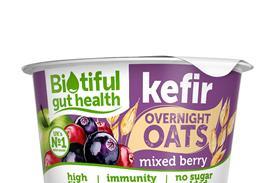


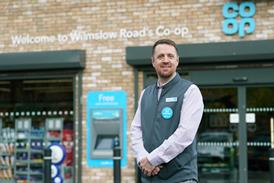








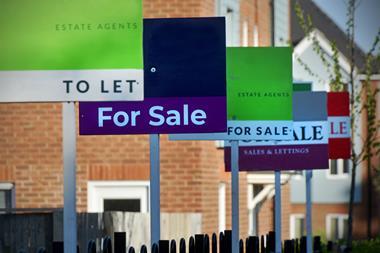
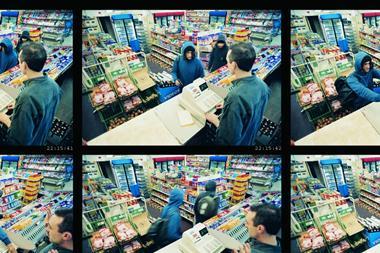

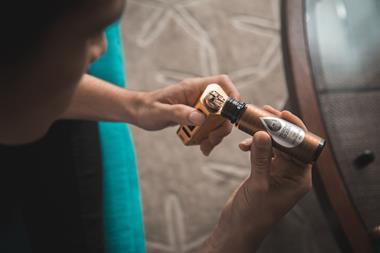
No comments yet